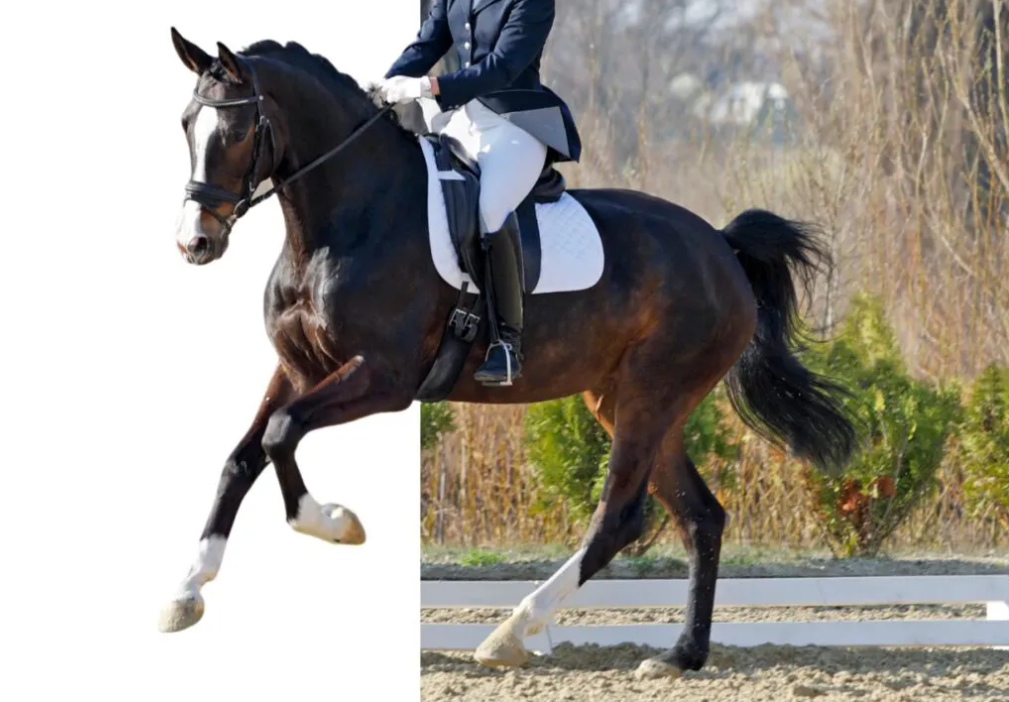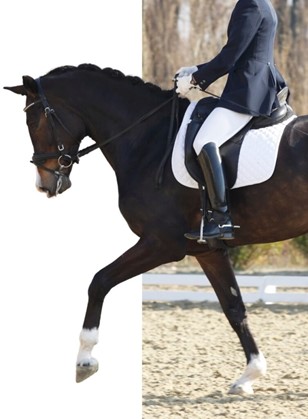Menu

The good transition is probably one of the most difficult exercises in the art of dressage. Regardless of the level, you never get around it. So you just have to keep at it until the technique becomes your second nature. Here we dive into the transition as a general training phenomenon. This means that you can use the techniques regardless of whether you ride the horse from walk to trot, from canter to walk or any other transition. With the editorial staff´s best advice, we try to help you make all your transitions as good as possible.
You may also like to read: Loading Horses: Just as hard as a dressage lesson
Basically, there are five things you can work on to make a better transition. The key words are: the horse must be in front of the helpers. There has to be a good contact between horse and rider. Remember plenty of energy. But at the same time the horse must also be relaxed - and then it must be straight.
The horse must be in front of the helpers. This means that it must be quick to respond to your signals and respond promptly when you ask for something. If it is not in front of the helpers, ask a bit extra of it until it gets works more in the shoulders and back. If it does not respond, then you have to make the pressure even greater until it responds quickly. In short, you need to have the feeling that your horse is walking in front of you. But that it also waiting for you. Only then are you ready to make a good transition.
The contact between you and your horse is of great importance. The horse must constantly feel that you are present. Both with your hands, weight and your legs from the thighs til your ancle. This does not mean that you have to sit stiff. You do not jerk the horse in the mouth or constantly give it a dot in the side. You just have to work with it; push it forward a bit, make a half halt and then it has suddenly also made a quick transition. The horse just needs to feel that you are there - so it is ready to react.

The constant contact with the horse will also help to ensure that the horse retains energy. Even if it is a transition that goes down in "gear", for example from canter to trot. Energy is important because it helps to get the horse moving forward again after the transition. And then it also applies - as most people are fortunately fully aware - that everything you train from exercises on a horse requires energy. If the horse lacks energy, it will also not be able to move forward in front of the helpers, and then the bearing that the horse so badly needs in a transition is basically lost.
However, the fact that the horse must be energetic in the transitions does not mean that it should be tense. On the contrary, it should be as relaxed as possible, and so should the rider. A transition becomes 100% nicest and looks both more beautiful and effortless if it is done as relaxed as possible. It is important that the horse uses the moment at which it makes the transition to relax and exhale. You only achieve this relaxation if the horse is generally relaxed during the ride. And here it is strangely enough energy that must be put into the fiery horse to make it relax better. Gymnastic work and a lot of half halts, while the horse is ridden forward, is usually what is needed.
Finally, there is the straightening. It is okay for the horse to be placed in the transition. But the hind legs must enter the track of the front legs, so the horse is straight in the back. Otherwise it will not be able to carry itself properly into the transition. This means that you can easily make a transition in a corner. This is often easier than doing it on the long side, if you just remember to keep your horse straight.
The trick is – that all of the above must be compressed into one movement that lasts a single second. That's what makes the transition such a difficult exercise.
It is also about seconds when you have to try to correct your horse in the transition. If, for example, the horse misunderstands your signal and perhaps thinks that it should go all the way down in to walk instead of just going from canter to trot. Then in the second it hesitates, you should have time to tell it to stay ahead in trot. That is why you have to ride forward in a transition. Even if you are taking it down from one gait to another.
Your horse might also think it should start cantering instead of trotting when you ask it to move forward. In that case, the trouble might lay in the touch or the relaxation. In other words – you should constantly try to analyze which of the above five factors is to blame for the problems you may be experiencing in working with the transitions.
Is the horse in front of your helpers? Is it energetic but relaxed? And are you as a rider able to keep the horse straight? Do you always make sure that you have good contact? Think it through when you ride - then you should be able to get better and better at those transitions.